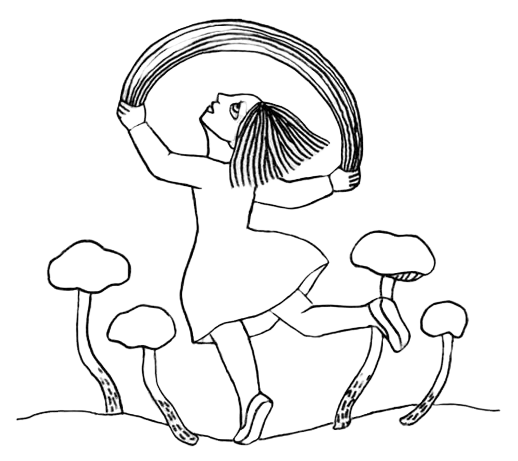2 December 2024, Kobe
A black-background photo of the Giant Fly Parasite collected on December 2nd. Numerous perithecia have already developed. Remarkably, it released spores despite the time of year.
I tore off a stromata that had not yet fruited to observe the anamorphic stage.



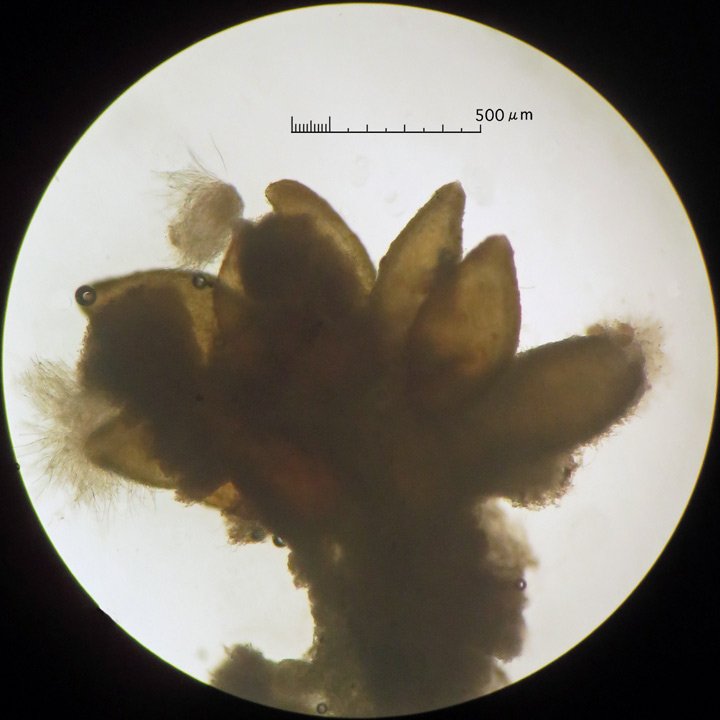







5 September 2024, Osaka
Today I went out with Mr. M and Mr. T, and Mr. M kindly guided us through his field. The environment was excellent, but perhaps due to the season, I only found common species, and ended up photographing the specimens Mr. M discovered.
Aside from entomopathogenic fungi, there were quite a few mushrooms as well. A possible fairy ring of Amanita caesarea (Caesar’s mushroom) was also spotted.







29 July 2024, Undisclosed location
I joined the Cordyceps Festival for the first time in a while, but it felt like I had used up all my energy just getting to the venue, and I ended up doing poorly in the actual field observation. Still, I figured I should at least post one photo, though it’s not something I found myself. The only fungus I managed to find in abundance was Ophiocordyceps nutans (Kamemushitake).
Perhaps due to being caught in the rain, my main camera started acting up, and I wasn’t able to take many photos. Even so, the evening gathering and the afterparty following the research presentations turned out to be meaningful, as I had good conversations with younger participants.





23 July 2024, Kobe
Headed to Ura-Rokkō. With the ongoing drought, there were, as expected, no visible mushrooms. The fly larva of an unidentified species, which I’ve been monitoring, showed no significant changes. I searched around further but had no real findings, only came across a single specimen of Entomophthora (fly mold).
There were hardly any mushrooms aside from entomopathogenic fungi, though slime molds seemed slightly more abundant than usual. The rest of my sightings were mostly insects and flowers.








16 July 2024, Kobe
Visited the site for the parasitic fungus on robber flies. Most specimens were nearly fully mature. Since the last visit, some had disappeared and others had withered. However, new ones were found, bringing the total count, including the withered ones, to 25. I brought back two that appeared to be fully mature.
Aside from those on robber flies, I also observed an old specimen of Gibellula dimorpha, a feather-brush type Gibellula, an unidentified immature spider-pathogenic fungus, and what seemed to be either the anamorph of Torrubiella superficialis or a hyperparasite. I took the latter two back with me.
Just two days after collection, the specimen has already started to deteriorate. On the surface of the stromal stalk, pin-like structures have appeared. These are not the anamorph of the parasitic fungus on robber flies, but rather a hyperparasite; essentially, it has become moldy. I examined the perithecia and asci under the microscope, but due to moisture, they were not clearly visible. The specimen has been dried and preserved.
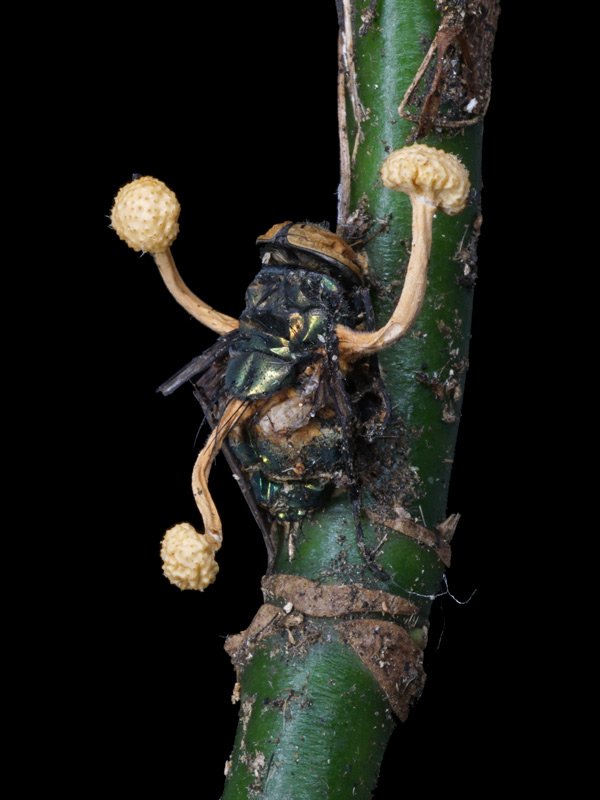








29 June 2024, Kobe
I went to the H promenade, which is a bit away from home. After the heavy rain, various mushrooms have started to appear. The most noticeable ones are Amanita species, while Boletes are still scarcely seen. There are also many Russula species. In addition to those, many other kinds of mushrooms can be found.
The H promenade (around 150 meters above sea level) is about 1.5 km from my house, but with more than 100 meters of elevation difference, it takes about 20 minutes to reach the entrance by bicycle. The return trip takes less than 10 minutes. During the short rainy season, it becomes like a mushroom festival, though today the numbers were still low. The southern side looked like this. To the north lies the reservoir lake.










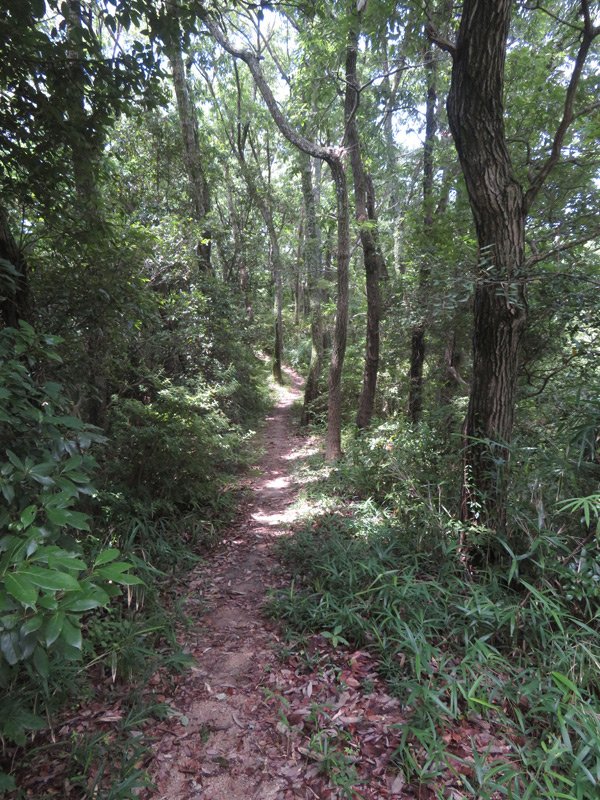

20 June 2024, Kobe
I went to see the bamboo mushroom (Phallus indusiatus), but it seems I missed the right timing. There were many remnants that likely emerged after the heavy rain a few days ago, as well as numerous unopened “eggs,” but only three specimens were in bloom. Since rain is forecast for the weekend, the peak viewing period might be early next week.
I also stopped by the area known for insect-parasitic fungi, but there wasn’t much emerging there either. I found one specimen that I couldn’t quite identify, so I brought only that one back with me.






8 June 2024, Kyoto
Since I had some business in Kyoto, I took the opportunity to check on the site known for Cordyceps takaomontana. As expected, most specimens were nearly mature, but the number was quite low, only eight bodies. Perhaps I missed a few, but it was nowhere near the outbreak we had in 2018.
Other finds included several fruiting bodies likely from the same host belonging to the Pleurocordyceps group, one immature specimen that appeared to be Ophiocordyceps prolifica, and a few Cordyceps annullata emerging directly from the ground.
Regarding the sclerotium-like co-infecting fungi found at this site, I had identified them as Polycephalomyces formosus (Shirosango-take) back in 2018. However, upon re-examining a specimen under the microscope in 2022, I confirmed it to be a member of Pleurocordyceps. Visually, as maturity progresses, the tips take on a yellowish hue, which is inconsistent with Polycephalomyces.
Microscopically, Polycephalomyces formosus forms conidia only at the sclerotium-like tips, whereas in Pleurocordyceps, conidiogenous cells are also present along the stipe, forming conidia there as well.


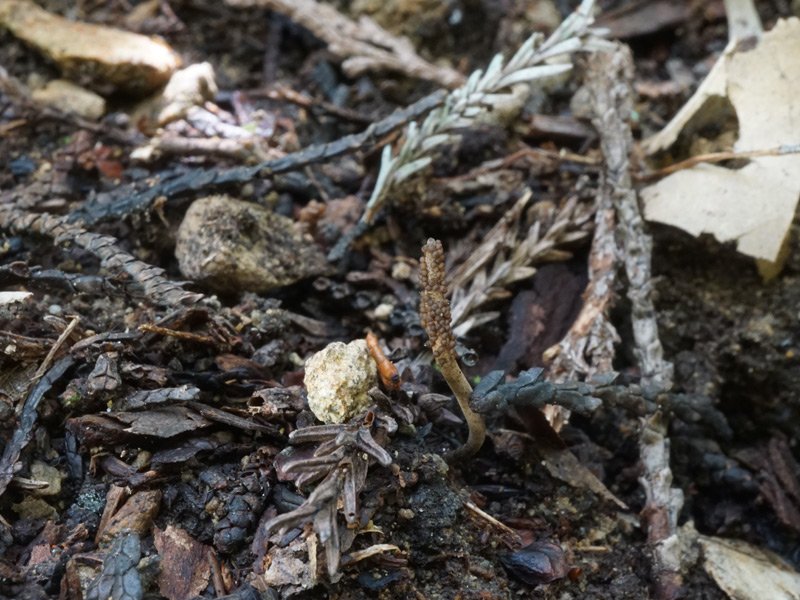








26 May 2024, Undisclosed location
Aschersonia collected during the field expedition on May 18. On the same leaf, there was a whitefly that appears to be the host, likely Aleuroclava tsugensis. On a nearby different tree, I found another Aschersonia that looked more typical, probably the anamorph of Moelleriella raciborskii.
I examined both specimens under the microscope. Unfortunately, I could not identify any distinct morphological differences. This is likely the first recorded instance of this particular host species for a Japanese Hypocella s.l. (most of which are classified under the genus Moelleriella). More accurately, no one seems to have investigated the host species in detail until now. While some species are generalists, others are highly host-specific. Therefore, if anyone encounters this in the future, I would appreciate it if they could also identify the host species.






18 May 2024, Kyoto
Traveled to the northern part of Kyoto City. Through prior email correspondence, Mr. T guided me to a site where Torrubiella petchii has been found. The area was an open, sunlit space dominated by Japanese andromeda (Pieris japonica), a type of environment that doesn’t immediately appear suitable for entomopathogenic fungi. The fungi were emerging from small moths that had landed on the leaves and branches of Pieris or Japanese cedar.
According to Mr. T, many specimens were discovered here last autumn, but they were now difficult to find, perhaps they had fallen during the winter, or become obscured by newly sprouted leaves. Nevertheless, I managed to locate nine individuals. Could the abundant larvae in the area be the hosts?
Another commonly found species here is Ophiocordyceps dipterigena, but this particular form had not been seen in the Kyoto area before. Mr. T mentioned its numbers had also declined during the winter.
Apparently, the needle-spined Isaria takamizusanensis is also common here, though I only found one old specimen due to the season. Interestingly, Mr. T discovered a strange specimen, possibly Ophiocordyceps yamangii. Although we left the specimen on site, I took back two Isaria takamizusanensis for microscopic examination.








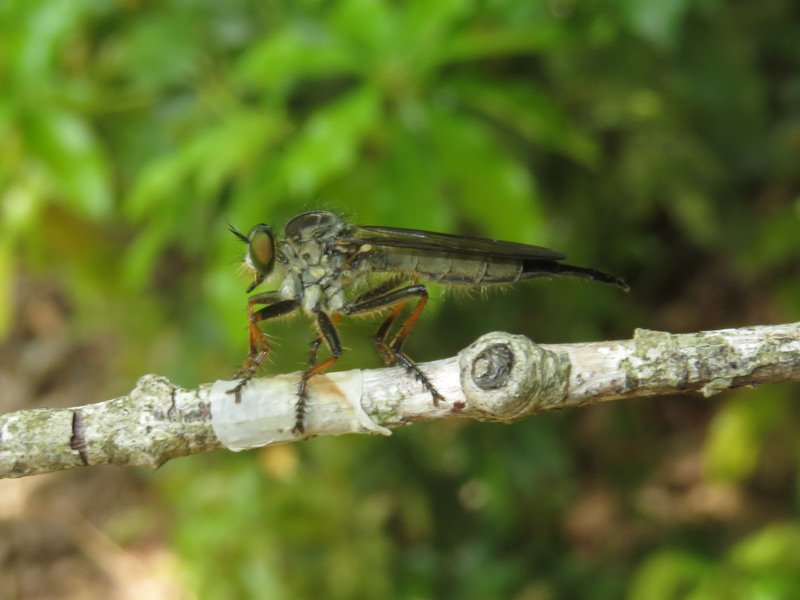

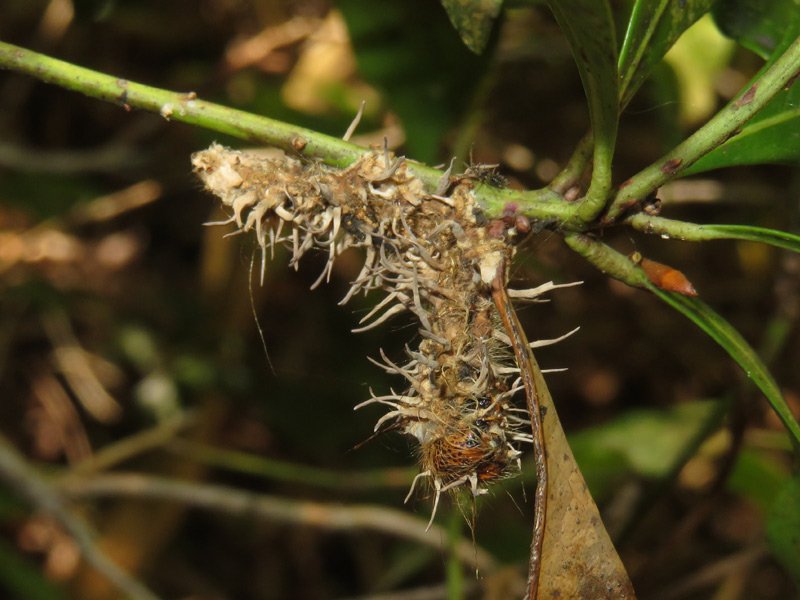
5 May 2024, Kobe
Photographed Ophiocordyceps sp. (Setouchi tsutonomitake) collected on May 3rd against a black background.
As it was actively releasing spores, I examined it under the microscope. The ascospores measured 180–220 × 2–2.5 μm (with very short ones at 170 μm and the longest reaching 235 μm). The septa were irregular and extremely difficult to observe. Even treatment with Melzer’s reagent proved ineffective.







29 April 2024, Kobe
Today was my first microscopy session in a while. I examined a specimen of Ophiocordyceps cf. cuboidea collected on July 29 last year, which had been left untouched until now.




27 March 2024, Kobe
Returned to Ura-Rokkō after a long time. Only a few wood-inhabiting entomopathogenic fungi were found.
The only species fully matured at this time of year appears to be Ophiocordyceps rubiginosiperitheciata. The others may be Cordyceps pruinosa parasitizing Platynota stultana. The white patch in the third photo might be Ophiocordyceps cuboidea or possibly a case of hyperparasitism.
Despite the heavy rainfall, few mushrooms have emerged.




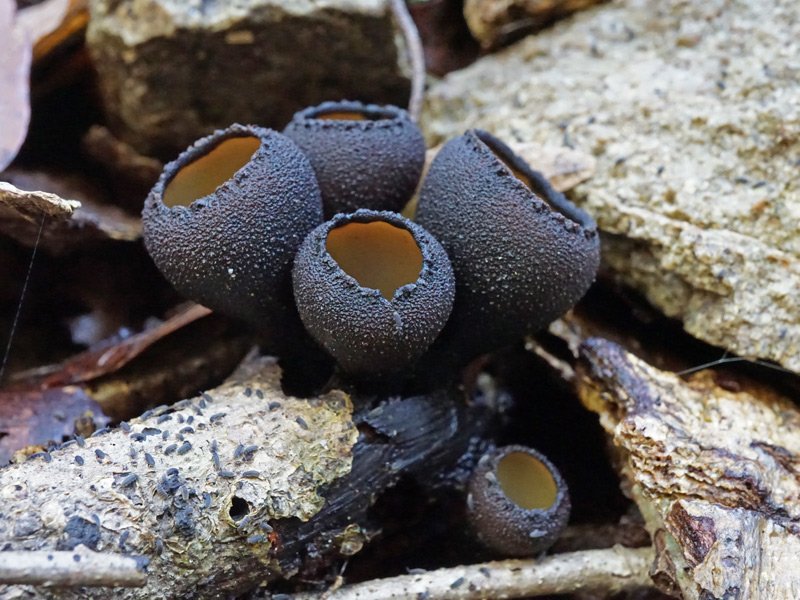


30 January 2024, Kobe
Visited the Ophiocordyceps sphecocephala site. Conditions were largely unchanged from the last visit. I expanded the search area but was unable to find any new specimens.
Other fungi observed included Aschersonia kawakamii, Gibellula dimorpha, and Ophiocordyceps formicarum.





